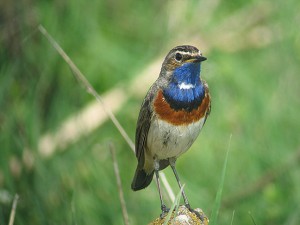The issue of British Birds to which I probably look forward the most is the annual report of the Rare Breeding Birds Panel.
In the July BB the Panel reports on 2010. It was a year of southern herons and southern warblers.
If you read my article on climate change in the August Birdwatch you will have seen that I described some of the changes that are ‘predicted’ by the mammoth study of the Climatic Atlas of European Birds.
Reading the RBBP report you can see signs of it all coming true too. Are subalpine, great reed, river and Marmora’s warblers on their way to colonise – or are they just toying with us? And these days you should look twice at any white heron to see whether it is a little egret or maybe a cattle egret or great white egret, and keep looking for spoonbills, purple herons, little bitterns and maybe even glossy ibises too. All these southern species seem to be on the move – and they are coming or way – perhaps.

Our bird populations are always changing – but now climate change is definitely a strong influence. This will not only affect what birds you see in the coming years but it ought to affect every aspect of your life. See Chapter 10 in Fighting for Birds for a much longer treatment of this subject.
[registration_form]
Hi Mark,always find it exciting seeing these birds coming into this country because of climate changing but at the same time it is sad to see so many of our native birds that we take for granted decreasing.
But I am old enough to remember when two of the most likely colonists were thought to be two species you don’t mention here: Serin and Zitting Cisticola. [Indeed, I am old enough to remember when they were called Fan-tailed Warbler!] There’s still not much sign of their breeding here, while they have been overtaken by many other species.
And that’s what makes it so interesting to keep on studying and recording birds. Thanks for the plug for the RBBP.
On Sunday I was taking photos of a Great White Egret 5 miles from home in the Midlands – something I would have only dreamed of 20 years ago – and certainly not in the middle of the country!
It’s one of the main things that informs me that climate change is real – the nature of new species establishing themselves here, and in such a short time. Great to see these birds and other plants and animals which benefit, but deeply troubling at the same time.
Gert – I agree
It’s been a cold (and in the main, dry) summer in the north of Scotland; maybe a coincidence, but I’ve found both Fieldfare and Redwing breeding within 50 miles of home.
I’d gladly trade both for Snowy Owl, mind you…